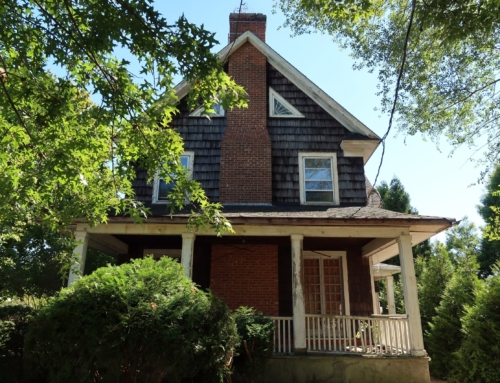You’ve seen the headlines: The glaciers are melting, the ozone is disappearing, and all of the recent natural disasters from hurricanes to tsunamis are being blamed on global warming.
But headlines can stir action which is why, this Earth Day week, Sergio Palleroni is pretty happy.
“We’re being bombarded with bad environmental news, and everyone is worried about it,” says Palleroni, a sustainable design expert, architect and professor at the University of Texas, based in Austin.
He says that the fear we’re losing the environmental battle means people are thinking, “What can I do?”
Palleroni’s answer: Learn a few easy ways you can reduce your own environmental footprint, starting with your own home.
“Everyone believes that cars are causing the destruction of the earth’s atmosphere. But really, it’s our houses that are causing the biggest problem,” he says.
Palleroni says that anywhere from 39 to 45 percent of the impact on the earth’s environment comes through the structures we create for living and working.
“It costs a lot of energy to create the materials we use to build our homes. Then, it costs a lot of energy to transport those materials to the building site. Once the building is built, it takes energy to make us hot and cold and finally, we use energy to get rid of the materials when we’re done with the building,” he explains.
Palleroni says that collectively, Americans have the power to save hundreds of millions of barrels of oil each year by taking a few simple steps to conserve energy in their homes.
First, he suggests replacing a few incandescent bulbs with compact fluorescent bulbs.
“Incandescent bulbs are really an inefficient way to light your house because they burn so hot. For every incandescent bulb you exchange for a compact fluorescent bulb, you’ll save one barrel of oil per year” Palleroni says, adding that if you changed more bulbs, you can easily cut your energy bills by a third.
According to Palleroni, with 110 million households in the U.S., the calculation is simple — if everyone in America exchanges 5 bulbs in their house, the U.S. will save a half a billion barrels of oil each year. And, many utility companies will help with the cost of changing out your bulbs.
When advising home builders and architects on sustainable design, he encourages them to think about how the house will be orientated.
“Design buildings so that they are longer and thinner and orientate the longer facade along the east/west axis so that there are more windows that are north- and south-facing,” he says.
Most of the U.S. has excellent exposure to the sun, notes Palleroni. By orientating the house so that it has more southern and northern exposure, the house will absorb more heat from the southern exposure, and give off more energy-free light from its northern exposure.
Maximizing the orientation of a house can cut its energy consumption almost in half, Palleroni says.
If you want to save more energy, install a light colored roof. Palleroni says the most energy-efficient roof is a white metal roof, which many architects are using on all styles of housing.
And while double-pane windows are better than single pane windows, windows by their very nature are less energy-efficient than walls. You can install new windows with a special coating that will make them more energy efficient.
Of course, windows that leak air are useless, Palleroni says, so buy a tube of caulk and get busy plugging the leak.
Finally, Palleroni suggests that instead of buying another hot water heater, consider installing a tankless hot water heater, also known as point source heating.
Common in Europe, tankless hot water heaters only heat water as you use it. Regular hot water heaters keep water hot all day, even if you only take a 10-minute shower in the morning and wash dinner dishes at night.
“It’s a waste of your energy dollars to keep that water hot all day,” Palleroni says, adding that he recently installed point source heating in his newly-renovated house in Texas and has used a tankless water heater for the past 21 years in a house he owns in Mexico.
“In Mexico, you see the tanks of gas being delivered to your door, so you’re aware of how much you’re using,” he notes. “In the U.S., the infrastructure is so good that we don’t see gas or water coming into our homes. We’re isolated from the delivery of energy, so it’s hard to gauge how much we’re using.”
“That’s what’s so amazing about the Toyota Prius. It has a gauge that shows you how much energy you’re saving and now everyone competes to see how little gas they can use,” he adds.
I’ll post additional comments and energy-saving suggestions from Sergio Palleroni on my website, ThinkGlink.com.






Leave A Comment